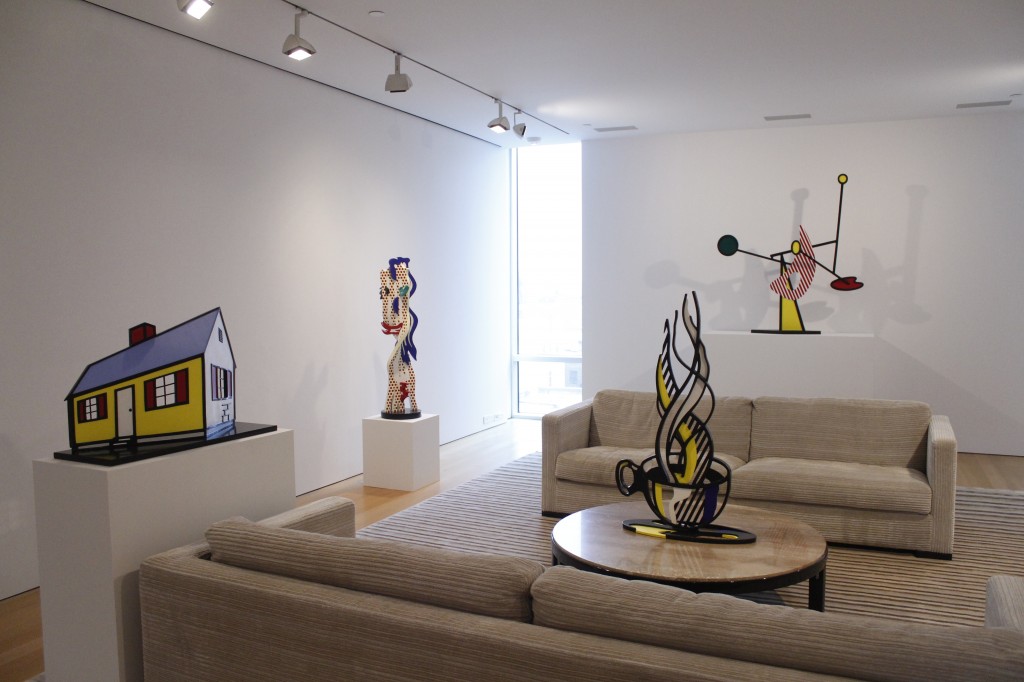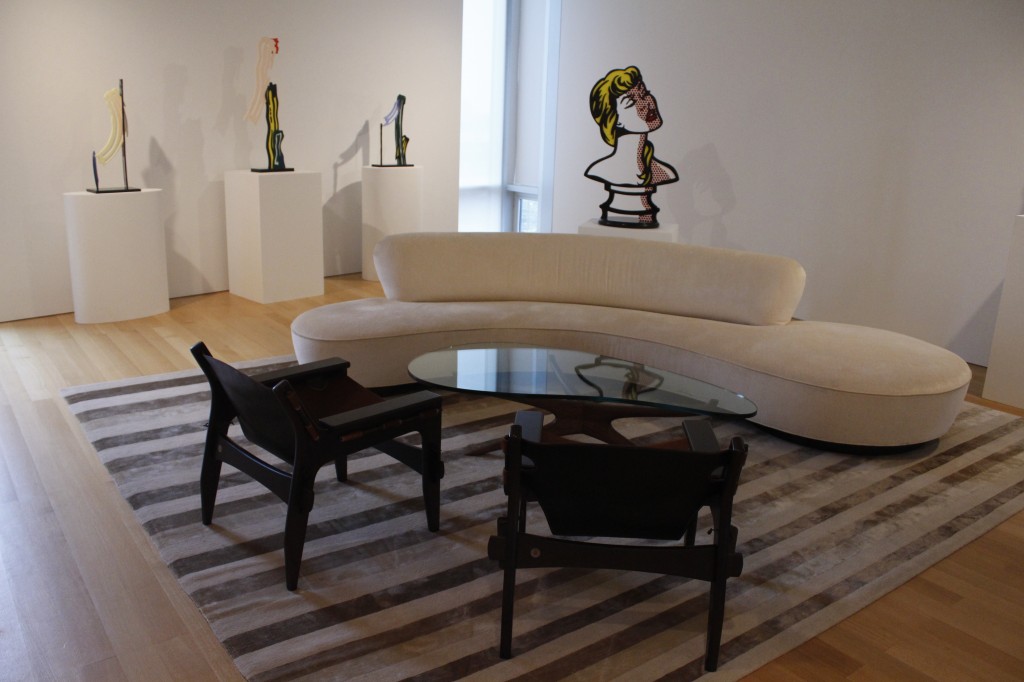INHALE is a cultural platform where artists are presented, where great projects are given credit and readers find inspiration. Think about Inhale as if it were a map: we can help you discover which are the must-see events all over the world, what is happening now in the artistic and cultural world as well as guide you through the latest designers’ products. Inhale interconnects domains that you are interested in, so that you will know all the events, places, galleries, studios that are a must-see. We have a 360 degree overview on art and culture and a passion to share.

Following the success of Roy Lichtenstein: Nudes and Interiors, curated by artists Hilary Harkness and Ewan Gibbs, The FLAG Art Foundation is pleased to present Roy Lichtenstein: Intimate Sculptures, an exhibition of fourteen sculptures, organized in collaboration with the Roy Lichtenstein Foundation, on view on FLAG’s 10th floor from June 26, 2014 –January, 31, 2015. This exhibition marks a yearlong engagement with the Roy Lichtenstein Foundation, allowing FLAG the honor of presenting two rarely-seen bodies of work by one of the twentieth century’s most influential artists.
Roy Lichtenstein: Intimate Sculptures presents a selection of the artist’s sculptures and maquettes, works that playfully and pointedly blur the boundaries of drawing, sculpture, and painting. Comprised of everyday and mass-produced objects – a mirror, water glass, and coffee cup – as well as the artist’s signature brushstrokes, the works highlight Lichtenstein’s ability to elevate the everyday to the iconic. Presented in a gallery space populated with furniture, the exhibition encourages engagement, inviting audiences to view historic works in an intimate setting. Maquette for House I (1996) inspired the domestic context for this environment, a later work wherein Lichtenstein reduces the structure of a cookie cutter suburban house to black outlines and primary colors – yellow siding, a blue roof, and red to accent the shutters and chimney.
Often overlooked but routinely used, commercial subjects become monuments in the artist’s hand, wherein shadow, contour, and highlight are rendered in patinated bronze. In Mirror II (1977), Lichtenstein transforms a vanity mirror into a static, unchanging reflection – focusing on the form of the object while negating its intended function. Mobile III (1990) directly references Alexander Calder’s archetypal mobiles, “freezing” an item whose sole purpose is to respond to movement. Rather than condense volume and function into a linear still life, these sculptures become intimate metaphors for the disposable society in which they exist.
Nodding to the physicality of the Abstract Expressionist movement and its influence on Western art, Lichtenstein’s brushstroke sculptures democratize mark-making and painterly authority through isolation and reproduction. Lichtenstein describes his desire to separate the brushstroke from the canvas and distill it to its purist form: “…my latest interest is probably in some way a reaction to the turn of contemporary painting back toward an expressionist path, toward the revealing of the brushstroke in the surface of the painting. Still, I am doing it my own way.”Lichtenstein’s modern approach to the brushstroke continued to incorporate his signature Ben-Day dots in new and substantial forms, most evident in the figurative works Maquette for Brushstroke Head Red and Yellow (1992) and Maquette for Brushstroke Nude (1992). Lichtenstein’s brushstroke sculptures are emblematic of his lifelong exploration of representation and abstraction, form and function, and high and low culture, and continue to pose the question “what constitutes art?”
via flagartfoundation.org





























































